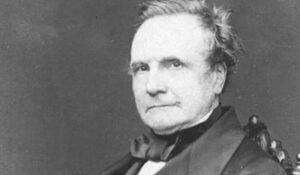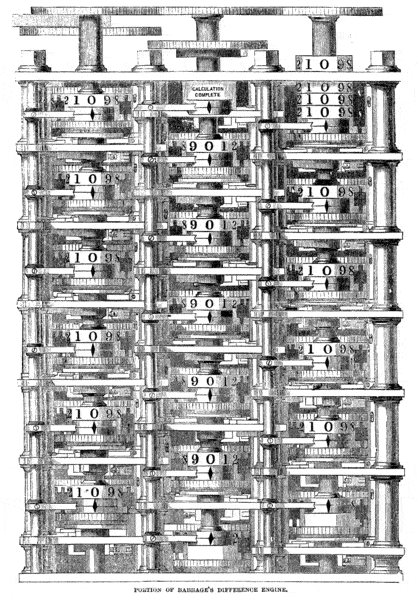Charles Babbage is credited for designing and giving birth to the idea of the first automatic digital computer. During the mid-1830’s, Charles developed plans for a Analytical Engine. Although, it wasn’t competed during his lifetime, Babbage’s plans made way for the basic elements of the present-day, modern computer.
Some time in 1821, the young English mathematician Charles Babbage (biography), checking calculations for improving tables for a navigational book, and disappointed by numerous errors in these calculations, shared with a friend, “I wish to God these calculations had been executed by steam!” “It is quite possible,” remarked his friend.
It was during the course of this activity that Charles Babbage began to seriously consider how such routine calculations could be performed mechanically. This preoccupation will last half a century, until his death. There is no doubt, that Babbage was an outstanding genius and he is the only man who deserves the title Father of the Computer.

Charles Babbage is commonly referred to as the Father of Computers.
Charles Babbage was an extremely intelligent man and during the time of 1828 to 1839, he was Lucian Professor of Mathematics at Cambridge. Not only was Babbage dedicated to his teachings (although known for being unconventional) he wrote three different topical books during this period of his life and was elected a Foreign Honorary member of the American Academy of Arts and Sciences in 1832.
Babbage’s Difference Engine and Analytical Engine
While his Difference Engine was a sophisticated specialized calculating machine and a huge step forward in the construction of calculating devices, it was nothing, compared to the Analytical Engine. Babbage dared to design an entirely mechanical digital programmable computer more than 100 years, before such a machine was produced.

It is simply astonishing that the designs for the Analytical Engine embodied in their mechanical and logical details just about every major principle of the modern digital computer.
This section of the site will follow the steps of the great man, as well as of his followers.
Babbage’s Difference Engine
Babbage designed his first Difference Engine in the 1820s. This device was intended to be an automatic mechanical calculator that could tabulate polynomial functions. While he drew plans for several different iterations of the machine, none of them were ever built due to a lack of funding and conflicts with his chief engineer, Joseph Clement, who was in charge of making the parts for the Difference Machine.
It’s interesting to note that Babbage’s first design, Difference Engine Number 1, would have weighed around four tons!
Inspired by Babbage’s work, two Swedes, Georg Scheutz and his son Edvard, completed a working prototype of a Difference Engine. They sold two fully engineered Difference Machines (in 1853 and 1859), which were “temperamental” and not very useful to their buyers.
Next Up…
- Charles Babbage Analytical Engine Explained
- Differential Engine – History of Charles Babbage Differential Engine
- Computer History – Personal Computers, Computing & Internet!
Want to Retire Early? Start Here (Sponsor)
Want retirement to come a few years earlier than you’d planned? Or are you ready to retire now, but want an extra set of eyes on your finances?
Now you can speak with up to 3 financial experts in your area for FREE. By simply clicking here you can begin to match with financial professionals who can help you build your plan to retire early. And the best part? The first conversation with them is free.
Click here to match with up to 3 financial pros who would be excited to help you make financial decisions.
The image featured at the top of this post is ©G-Stock Studio/Shutterstock.com.
